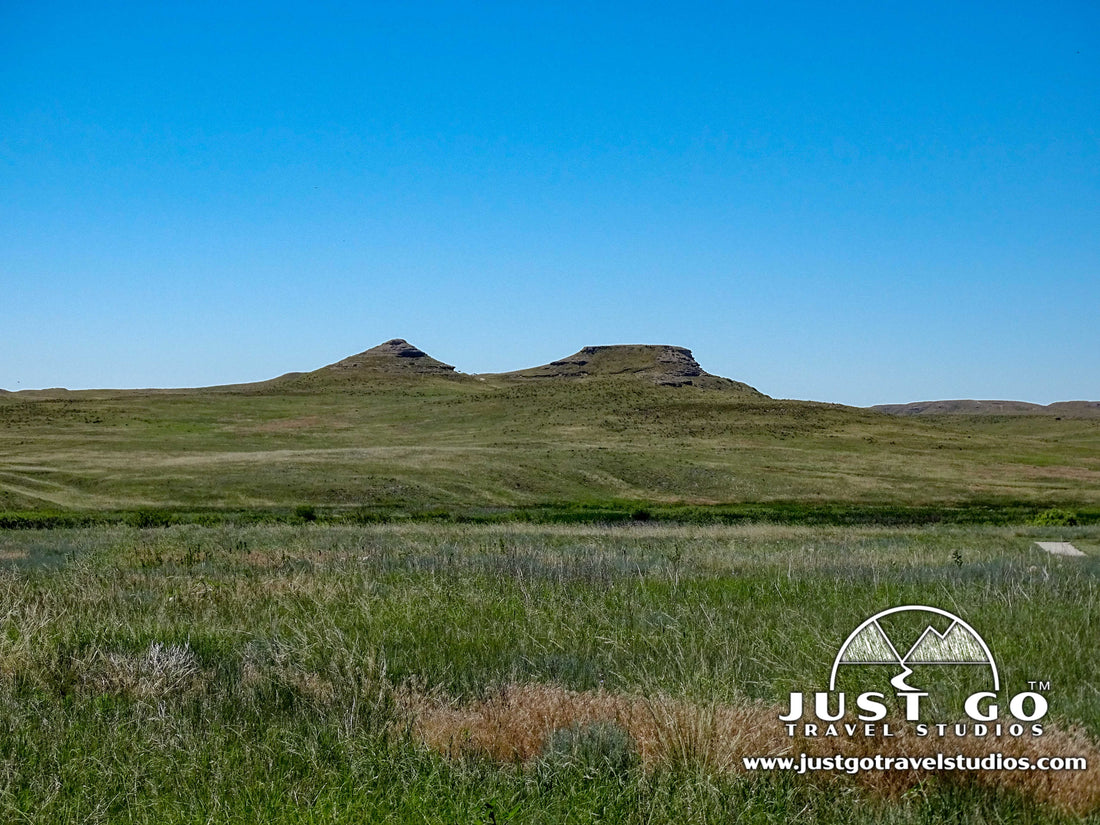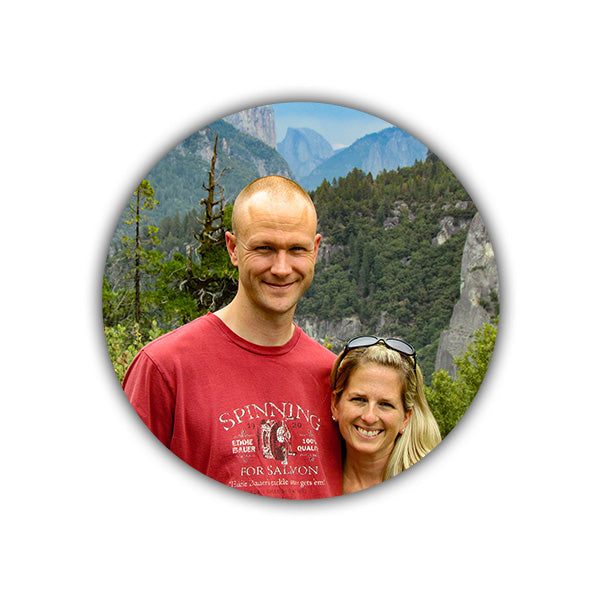
Agate Fossil Beds National Monument: Things to Do, Hiking Trails, Maps & More
Peter BrahanSitting in western Nebraska, miles from any city (let alone gas station), is Agate Fossil Beds National Monument. This small and unassuming site is home to a surprising discovery that was made by the first settlers in the 1890s-mammal fossils from the Miocene Age.
In an average year, just 15,000 visitors make their way to this remote part of Nebraska. When we visited in 2017, our family of five represented a little over 12% of their daily visitors! However, what started off as an unplanned stop while traveling from Wind Cave National Park on our way to Denver ended up being a great find for our family. The extremely friendly staff were very helpful and went out of their way to make sure we had a great visit.
If you are planning a trip to the area, make sure you take an hour or so and visit Agate Fossil Beds National Monument!

FINDING FOSSILS IN NEBRASKA
James H. Cook had an unlikely path on his way to finding fossils in Nebraska. Given up for foster care when he was two to a Quaker family, he started working at the age of 12. After first attempting to work on boats on the Great Lakes, James then found his way to Kansas and worked for a number of ranchers.
When he was 19, James moved to Montana and worked as a trapper and as a hunting guide in Wyoming. After he married his wife Kate, he settled in Nebraska after purchasing a piece of land from his father-in-law and named it the Agate Springs Ranch.
Between ranching and raising a family, James also spent time exploring the land that he owned along the Niobara River. The first fossils discovered were strange corkscrew looking fossils, which were Paleocastor burrows and were dubbed “Devil’s corkscrews.” These strange looking formations from between 5 million and 23 million years ago were underground tunnels built by prehistoric beavers and were naturally preserved with sediment different than the rock around it.
The Paleocaster burrows were found near two hills that are now known as University Hill and Carnegie Hill. These two hills were the site of the main excavation that took place in the late 1890s and early 1900s. Over several years, dozens of mammal fossils were uncovered, including the Beardog (a small, coyote-sized animal), a Dinohyus, Stenomylus, Morphus and Menoceras. You can read more about these strange creatures on the mammal fossil page on the Agate Fossil Beds National Monument site.
THINGS TO DO AT AGATE FOSSIL BEDS NATIONAL MONUMENT

Agate Fossil Beds Visitor Center
Without a doubt, visiting the Agate Fossil Beds National Monument Visitor Center is a must. With helpful rangers, fossils recreated into mounted skeletons, in-depth information in the area and the James H. Cook collection of Native American artifacts, there is plenty to keep you here for at least 30 minutes, if not more. You’ll also find a 12- minute video that provides an overview of the land and how it came to be.
James H. Cook Collection
The James H. Cook collection takes up a good portion of the visitor center. During his family’s stay in Nebraska (which lasted several decades), James Cook befriended Red Cloud, who was the chief of the Ogala Lakota tribe. Over a friendship that lasted approximately 35 years, Red Cloud visited with his tribe members frequently and camped with tribe members in their yard. Visitors would often swap Indian artifacts for beef cattle, and over time this built up into quite a special collection. This collection (which includes photographs, leather clothing, moccasins, decorated war clubs and much more) is on display in a special room. Out of respect, the National Park Service asks that voices are kept to a whisper inside this area.

Junior Ranger Program
For the kids, in addition to the mammal fossils (which they will undoubtedly refer to as “dinosaurs” after you leave the site!), there is a junior ranger program that our kids enjoyed working through.

We have to point out that the what made our visit special was the staff. With so few people coming to this part of the U.S. and with a team of people that are obviously passionate about their work and the site, they do everything possible to make sure you have all your questions answered and end up having a great experience. Not only did they answer our questions, they also went out of their way to make sure we saw what we could in the short time we were there.
The visitor center also has a water filling station and restrooms.

Hiking
Hiking may not be something that you naturally think of when in Nebraska, but there a two short hikes in Agate Fossil Beds National Monument that are worth exploring which we’ll cover in the next section.
HIKING TRAILS IN AGATE FOSSIL BEDS NATIONAL MONUMENT
Agate Fossil Beds Trail
- Difficulty: Easy
- Distance (round-trip): 2.7 miles
- Elevation gain: 170 feet
- Hiking time (approximate):5 hours
The Agate Fossil Beds Trail is the most popular trail in the park. The trail starts right from the visitor center. It is an easy 2.7-mile round trip hike with approximately 170 feet total elevation gain. The paved trail is very well maintained, is paved and offers seating areas along the way. After starting off flat, the trail then ascends slowly as it approaches the former dig sites. Eventually, the trail takes hikers to the top of both Carnegie and University Hills. From here, there are incredible views of the Nebraska Prairie.
Daemonelix Trail
- Difficulty: Easy
- Distance (round-trip): 1.0 miles
- Elevation gain: 137 feet
- Hiking time (approximate): 45 minutes
The Daemonelix Trail is an easy 1.0-mile hike and has an elevation gain of just 137 feet. The trailhead starts at the intersection of River Road (the main road into the site) and Nebraska Highway 29. This trail has a slow incline as well, before looping around to allow you to see glass encased fossils Paleocaster burrows (see above). While not offering the same view as the Agate Fossil Beds Trail, some find the addition of fossils makes this trail more interesting.
The trails are very well marked, but maps of the property are available inside the visitor center if you’d like to look into the trails ahead of the visit.
Be advised that both trails are exposed the entire way, so be prepared with bug spray and sunscreen. Also, while rare, it’s possible that you could see a rattlesnake along the trail. Keep your eye out and children on the trails.
WHERE TO STAY IN AND AROUND AGATE FOSSIL BEDS NATIONAL MONUMENT
- Agate Fossil Beds National Monument Lodging: There is no lodging inside of Agate Fossil Beds National Monument.
- Lodging near of Agate Fossil Beds National Monument: The closest place to stay is 25 miles to the north in the town of Harrison, NE.
- Agate Fossil Beds National Monument Camping: There is no camping inside of the monument. However, about 1.5 miles to the east is camping for tents and RVs at the Pavement Ends Campground. This place is great for viewing the night sky without the obstruction of light or pollution. There is camping in Mitchell, NE, which is about 30 minutes to the south. To the north, camping is available just outside of Harrison. For additional details, check out the camping resource on the Agate Fossil Beds site.
HOW TO GET TO AGATE FOSSIL BEDS NATIONAL MONUMENT
The closest airport with a major carrier is in Scottsbluff, NE, just about 50 miles to the south. Another good option is Rapid City, SD, as quite a few more carriers fly into here. Rapid City is about 171 miles away to the north.
- Directions from Scottsbluff, NE to Agate Fossil Beds National Monument
- Directions from Rapid City, SD to Agate Fossil Beds National Monument
AGATE FOSSIL BEDS NATIONAL MONUMENT WEATHER
Weather in western Nebraska can be very hot in the summertime and cold and windy in the winter. Be prepared by bringing plenty of protection against the sun in particular if traveling here in the summer.
FURTHER INFORMATION ON THE SURROUNDING AREA FROM JUST GO TRAVEL STUDIOS
- To the north are several National Parks. Check out our information on Badlands National Park, Wind Cave National Park and the “little Yellowstone,” Custer State Park.
- Right in Nebraska is another great site that we covered in our blog, What to See and Do in Scotts Bluff National Monument.
- We’d love to work with you to take one of your photos and turn them into one of our unique, custom, vintage-style travel posters. We’ve even created a poster for Agate Fossil Beds National Monument! Give us a chance and we’ll be sure to impress you!
FINAL THOUGHTS
If you are contemplating a trip to Agate Fossil Beds National Monument, make sure you make the trip. Even if it is out of your way, you won’t be disappointed!



